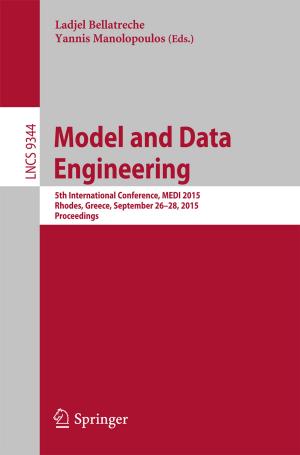Temperature and Frequency Dependence of Complex Permittivity in Metal Oxide Dielectrics: Theory, Modelling and Measurement
Nonfiction, Science & Nature, Technology, Microwaves, Material Science| Author: | Jonathan Breeze | ISBN: | 9783319445472 |
| Publisher: | Springer International Publishing | Publication: | September 8, 2016 |
| Imprint: | Springer | Language: | English |
| Author: | Jonathan Breeze |
| ISBN: | 9783319445472 |
| Publisher: | Springer International Publishing |
| Publication: | September 8, 2016 |
| Imprint: | Springer |
| Language: | English |
This thesis investigates the dielectric properties of metal-oxide ceramics at microwave frequencies. It also demonstrates for the first time that a theory of harmonic phonon coupling can effectively predict the complex permittivity of metal oxides as a function of temperature and frequency. Dielectric ceramics are an important class of materials for radio-frequency, microwave and emergent terahertz technologies. Their key property is complex permittivity, the real part of which permits the miniaturisation of devices and the imaginary part of which is responsible for the absorption of electromagnetic energy. Absorption limits the practical performance of many microwave devices such as filters, oscillators, passive circuits and antennas. Complex permittivity as a function of temperature for low-loss dielectrics is determined by measuring the resonant frequency of dielectric resonators and using the radial mode matching technique to extract the dielectric properties.
There have been only a handful of publications on the theory of dielectric loss, and their predictions have often been unfortunately unsatisfactory when compared to measurements of real crystals, sometimes differing by whole orders of magnitude. The main reason for this is the lack of accurate data for a harmonic coupling coefficient and phonon eigenfrequencies at arbitrary q vectors in the Brillouin zone.
Here, a quantum field theory of losses in dielectrics is applied, using results from density functional perturbation theory, to predict from first principles the complex permittivity of metal oxides as functions of frequency and temperature.
This thesis investigates the dielectric properties of metal-oxide ceramics at microwave frequencies. It also demonstrates for the first time that a theory of harmonic phonon coupling can effectively predict the complex permittivity of metal oxides as a function of temperature and frequency. Dielectric ceramics are an important class of materials for radio-frequency, microwave and emergent terahertz technologies. Their key property is complex permittivity, the real part of which permits the miniaturisation of devices and the imaginary part of which is responsible for the absorption of electromagnetic energy. Absorption limits the practical performance of many microwave devices such as filters, oscillators, passive circuits and antennas. Complex permittivity as a function of temperature for low-loss dielectrics is determined by measuring the resonant frequency of dielectric resonators and using the radial mode matching technique to extract the dielectric properties.
There have been only a handful of publications on the theory of dielectric loss, and their predictions have often been unfortunately unsatisfactory when compared to measurements of real crystals, sometimes differing by whole orders of magnitude. The main reason for this is the lack of accurate data for a harmonic coupling coefficient and phonon eigenfrequencies at arbitrary q vectors in the Brillouin zone.
Here, a quantum field theory of losses in dielectrics is applied, using results from density functional perturbation theory, to predict from first principles the complex permittivity of metal oxides as functions of frequency and temperature.















